The career of Italian Air Marshal Italo Balbo and his role in the development of Soviet-Italian cooperation
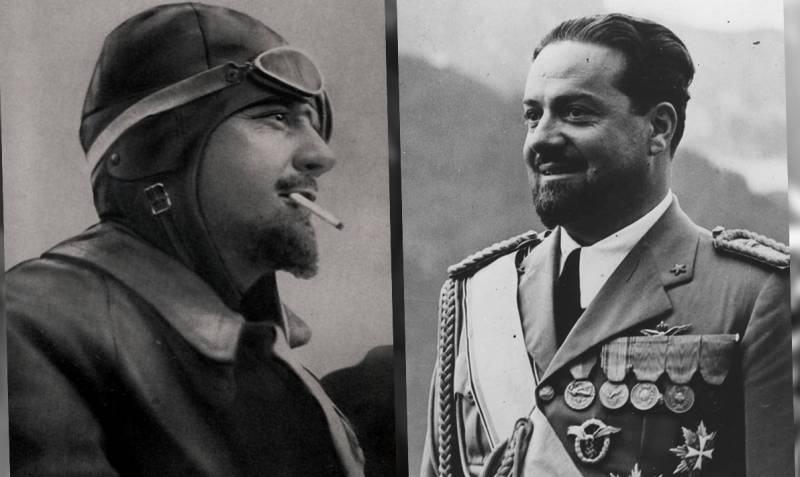
Despite the fact that since the mid-1920s. The term fascism began to be used in the press and journalism of the Soviet Union to designate a very wide range of phenomena; the foreign policy relations of the USSR and fascist Italy were built independently of propaganda stereotypes. This was emphasized by high-ranking representatives of both the Soviet and Italian sides. The rapprochement of the regimes of B. Mussolini and A. Hitler became a factor that served to cool relations between Moscow and Rome in the 1930s [3].
However, despite the fact that the confrontation between fascist and communist ideologies spilled out onto the pages of the media in a wide variety of forms, as historians note, this did not prevent Italy and the Soviet Union from maintaining broad economic contacts. In particular, economic, scientific and technical contacts between the two countries in the field aviation were of a permanent nature and were not interrupted until June 1941 [2].
One of the key figures in stories development of Soviet-Italian relations in the field of aviation is Italo Balbo. The figure of the Minister of Aviation of Italy has been rather poorly studied in domestic historiography; among the works regarding his role in the development of Soviet-Italian relations, the dissertation of historian Polina Dyakonova “Soviet-Italian relations in the field of aviation: 1924 - June 22, 1941” should be noted, aka is also the author of several scientific articles on this topic.
More detailed works regarding the personality of Balbo are available only in Italian historiography - here we should note the works of the historian Giorgio Rocha (Rochat), as well as the books of Claudio G. Segre and F. Quilici and the article by Aldo Berselli in the Biographical Dictionary of Italians.
As P. Dykonova notes, Italo Balbo was one of the quadrumvirs in the march on Rome and, like no one else, was devoted to the ideals of fascism. His figure came to the fore in the history of Italian aviation thanks to a multi-stage flight across the Western Mediterranean (1928), then across the Eastern Mediterranean (1929), and most importantly, thanks to the transatlantic flights of Italian air squadrons to Rio de Janeiro in 1931 year and Chicago. Balbo wrote a book about this, “The Winged Century,” published in 1934.
In international aviation vocabulary, the word “balbo” has become a common noun and means a special formation of aircraft during a flight [2].
In this material we will try to answer the questions - what kind of person Italo Balbo was and what role he played in the development of Italian aviation and Soviet-Italian cooperation in the field of aviation.
The youth of Italo Balbo and his participation in the First World War
Italo Balbo was born on June 6, 1896 in Ferrara, into a poor family. It is known that his father, Camillo Balbo, was a school principal and a moderate liberal, and his mother, Malvina Zuffi, was a primary school teacher. His father was of Piedmontese origin, and his mother was from Romagna (her family came from Lugo). Italo was the fourth child in the family [2].
The head of the Museum of Risorgimento and Resistance (Museo del Risorgimento e della Resistenza) in Ferrara, Antonella Guarnieri, noted that, according to school documents of the time, Balbo did not achieve excellent academic results. Although biographies of the fascist period (intended to extol his political and leadership abilities) described him as a child prodigy, the reality was different.
Balbo attended the gymnasium where he entered irregularly and was not considered a disciplined student; his education was determined mainly by the influence that unsystematic reading and the family situation had on him: his brother Fausto was an ardent Mazzinianist, his other brother Edmondo was a revolutionary trade unionist [1 ].
Contacts with the revolutionary and republican circles of Ferrara of that time had a serious influence on the young man - as a teenager he met General Ricciotti Garibaldi, Antonio Giuschiano, Felice Albani. In 1910, having learned about the expedition planned by General Garibaldi to liberate Albania from the rule of the Ottoman Empire, he ran away from home and tried to join the military expedition. But he failed, as Balbo was stopped by the police, warned by his father.
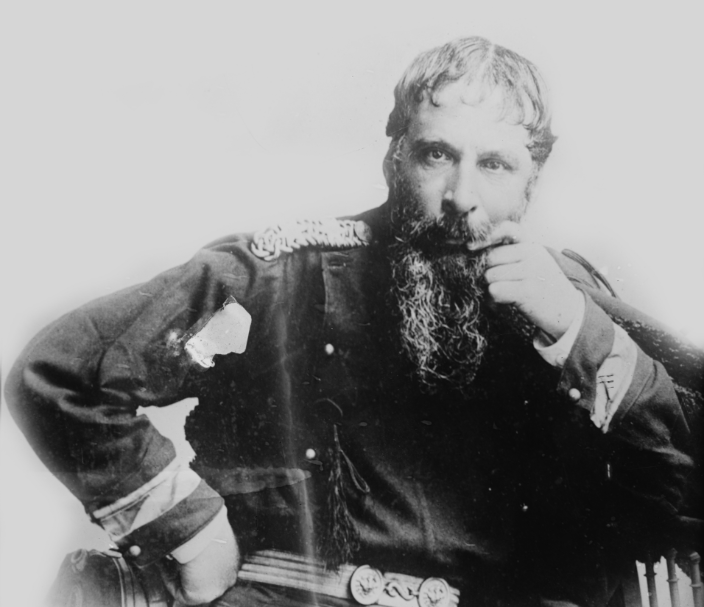
Ricciotti Garibaldi
Before the outbreak of the First World War, Balbo took part in discussions between monarchists and republicans, his political positions for some time were close to the republican and the ideas of Giuseppe Mazzini, whom the young Italo greatly respected. Balbo adhered to the ideas of irredentism and for this reason, in 1914, he sided with the interventionist movement that advocated war against Austria-Hungary.
He often went to rallies in Milan, where during one of the demonstrations he met Benito Mussolini. Subsequently, Balbo became the bodyguard of Cesare Battisti during the rallies that he held in support of the intervention. One of these meetings took place in Ferrara on November 27, 1914, and Italo invited his irredentist friend from Trentino, 21-year-old Renzo Ravenna, who was of Jewish origin.
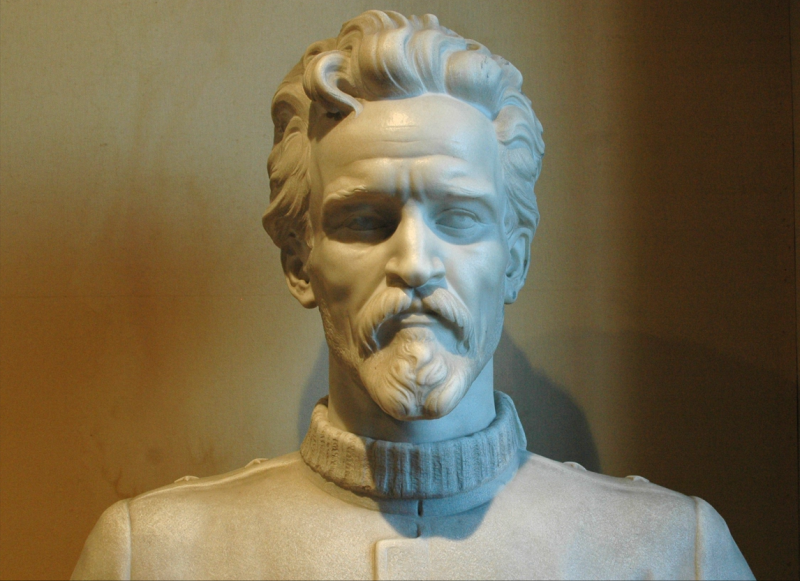
Cesare Battisti is an Italian politician with Austrian citizenship and a supporter of irredentism. He actively advocated for Italy's entry into the war against Austria-Hungary. Took part in the First World War. During the Trentino operation he was captured, accused of treason by the Austrians and executed. National hero of Italy.
Following Italy's entry into the Great War, Italo Balbo joined the army as a volunteer. With the rank of second lieutenant in the Alpine troops, he served on the front line in the mountainous regions. In the autumn of 1917, he attended a pilot course in Turin, which was interrupted due to the events in Caporetto [1]. In 1918, he took part in the second battle of Mount Grappa, which resulted in the liberation of the city of Feltre. At the last stage of the war, he received a bronze and two silver medals for military valor, rising to the rank of captain.
After the armistice, Italo Balbo remained with his battalion for another five months as commissar of the prefecture of Pinzano al Tagliamento in the province of Udine [5].
Balbo becomes the leader of the fascist movement
After demobilization, Balbo went to Florence, where he completed his university studies, defending a dissertation on “The Economic and Social Thought of Mazzini” at the Cesare Alfieri Institute in October 1920. Mazzini was always at the center of his interests: he continued to turn to him for the key to solving socio-political problems.
It is worth noting one of the interesting theses from his dissertation - in it he argued that the League of Nations would not be an instrument of peace and justice, but of new injustice, provoking new wars [1].
After finishing his studies and returning to his hometown, he devoted himself body and soul to the political struggle. Having begun his search for work, Italo Balbo received an offer to take the position of secretary of the fascist organization of the Italian Union of Struggle in Ferrara. Having received this position on February 13, 1921, Balbo also became the organizer and commander of the squadristas (Black Shirts), managing to subjugate all the fighting units in Emilia-Romagna [5].
Balbo's Ferrara fascism, like the fascism of other leaders of the “quadrangle” (Ferrara, Mantua, Bologna, Modena), had serious support in the countryside, was largely “agrarian” and took an oppositional position even towards Mussolini himself. This subsequently allowed some researchers of fascism, for example, the Soviet diplomat and journalist N. I. Iordansky, to consider the fascist movement as “a product of the peasant-kulak element, which attracts petty-bourgeois elements of the urban population, students and part of the intelligentsia” [7].
During the Red Biennium, Balbo's troops, partly financed by local landowners, opposed strikes and monopolies forcibly established by the socialist leagues through punitive actions. Balbo, who always wore a black shirt, was the main propagandist of this emblem of fascism. One of the researchers of fascism, publicist Silvio Bertoldi noted that he was an excellent organizer, had great charm, and at the age of twenty-five communicated on equal terms with quaestors and prefects [5].
Italo Balbo was primarily a military organizer of the fascist forces. At the beginning of 1922, he, together with generals Gandolfo and Dino Perrone Compagni, laid the foundations for the transformation of the squadristas into a fascist militia [1].
Along with Michele Bianchi, Emilio De Bono and Cesare De Vecchi, Italo Balbo was one of the leaders (quadrumvirs) of the fascist revolution, the apogee of which was the “March on Rome”. Balbo took an active part in the development of a plan that provided for the concentration of fascist brigades throughout Italy in a certain place outside Rome to conquer the capital [8].
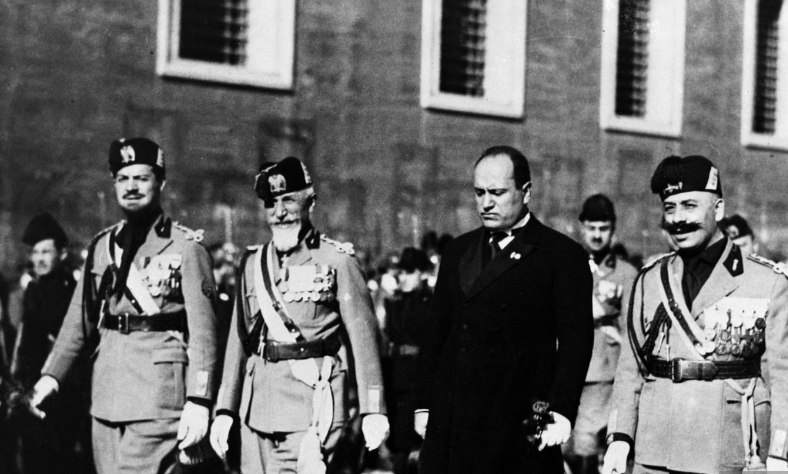
After the fascists came to power in 1923, Balbo founded the newspaper Il Corriere Padan in Ferrara, which he led for some time. That same year, he succeeded De Bono as temporary commander-in-chief of the Voluntary Militia for National Security (Milizia volontaria per la sicurezza nazionale).
He did not remain at the head of the Blackshirts for long - he resigned from this position in 1924 after several publications in the press, which spoke about his orders to beat anti-fascists and about pressure on the judiciary [6]. In addition, he was accused of organizing the murder of the anti-fascist parish priest Don Giovanni Minzoni in Argenta.
On October 31, 1925, Balbo joined Mussolini's government as Undersecretary for National Economy. He remained in this post until November 6, 1926, when he was appointed Italian Secretary of State for Aviation. And in 1929 he took the post of Minister of Aviation (Italian: Ministero dell'Aeronautica).
“Who flies is worthy, who does not fly is unworthy”: Balbo’s contribution to the development of Italian aviation
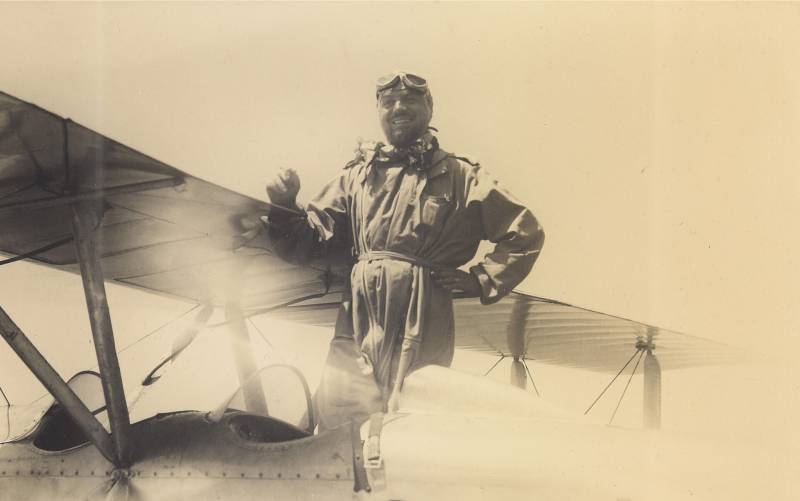
Italo Balbo approached work at the Ministry of Aviation with enthusiasm, which was determined by his character - he sought to loudly declare himself in new areas and break out of the bureaucratic captivity of the party. Following in the tradition of aviation pioneers such as Giulio Douhet with his theory of air warfare, and Francesco de Pinedo with his transatlantic flights, Balbo devoted himself to the study of the technology and application of both civil and military aviation, taking into account foreign experience [1].
In the 1920s–1930s. Fascist Italy organized numerous flights across the Mediterranean, to South America and to the USA, mainly for advertising and propaganda purposes. She also participated in winning international records for altitude, speed, duration and range of flight in a closed and straight line.
As historian Polina Dyakonova notes, with the appointment of Italo Balbo as Minister of Aviation in 1929, Italian aviation reached its peak. During this period, the state made huge orders to aircraft factories, organized new flying clubs and flight schools, held grandiose air parades, and built new airfields. Aviation was presented by fascist leaders as their main pride, thanks to the conquest of numerous speed, altitude and long-distance flight records [2].
Thus, the single-engine aircraft S.64 from SIAI-Marchetti was specially designed to set three world records: flight range, duration of stay in the air and average speed on a long-distance route. In May-June 1928, pilot Arturo Ferrarin and navigator Carlo Del Prete set a world record for distance flight along a closed route (7 km in 666 hours 58 minutes) and a record for distance in a straight line from the Roman airfield of Montecelio to Brazil (37 km in 7 hours 188 minutes).
Back in the 1920s, a rhyming quote composed by Italo Balbo became widespread in Italy: “Whoever flies is worthy, whoever does not fly is unworthy, and whoever is worthy and does not fly is a coward” (Chi vola vale, chi non vola non vale e chi vola e non vale è un vile). This slogan was placed in the atrium of the monumental Italian Air Ministry, inaugurated by Mussolini and Italo Balbo on September 28, 1931.[2]
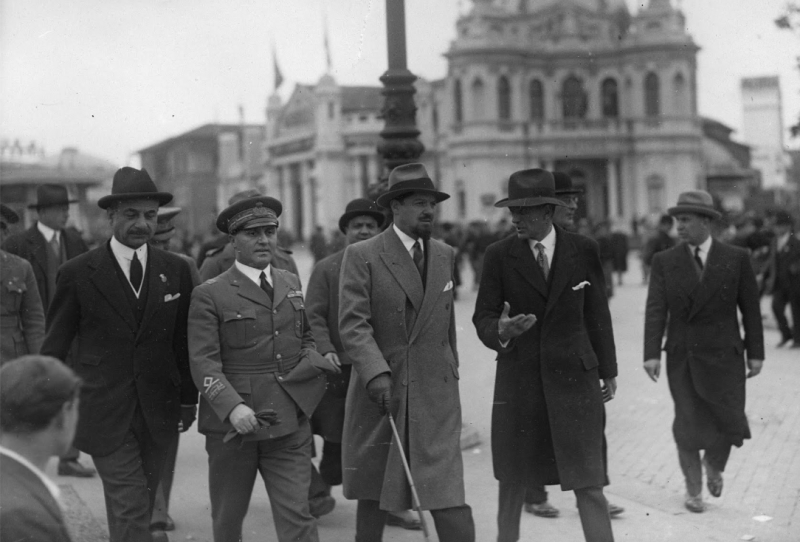
Italo Balbo at the 1931 Milan Exhibition
Balbo personally led two transatlantic air flights of Italian squadrons to Rio de Janeiro in 1931 and Chicago (a sensational flight in 1933 in honor of the decade of fascism). Balbo subsequently wrote a book about this, “The Winged Century,” which was published in 1934.
Being a supporter of the ideas of G. Douhet regarding the role of strategic aviation, Balbo nevertheless actively supported the creation of tactical aviation under the command of Amadeo Mecozzi, who, as is known, is considered the founding father of the Strike Aviation doctrine.
After the second transatlantic flight to Chicago, Balbo, who already had the rank of squadron general, was appointed air marshal. However, his military policy, which implied the development of aviation more than other armed forces, since Balbo assumed the predominantly air nature of the future war, met with serious resistance. In 1933, the budget for aviation development was reduced, and Balbo was soon removed from his post as minister [1].
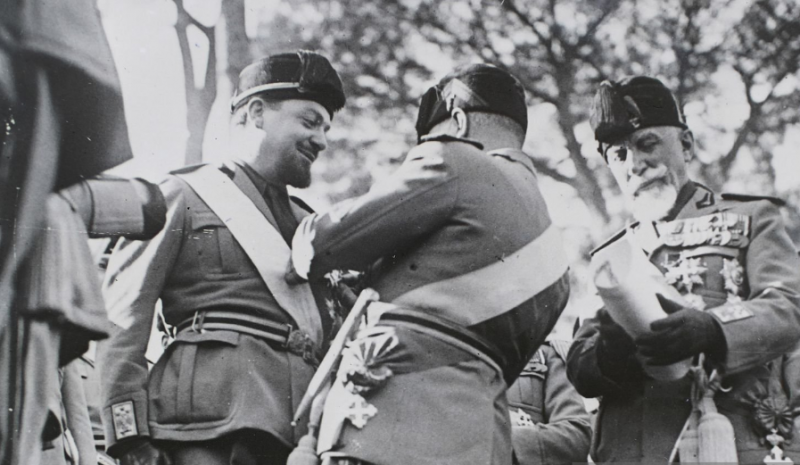
Italo Balbo at the 1931 Milan Exhibition
The prestige that was accumulated by the Italian Air Force during the period when Balbo headed the Ministry of Aviation gave the Italian authorities the impression of having a first-class air force [11]. As a result, Mussolini had too much faith in his aviation and began to allocate less and less resources to it.
It is worth noting that during this period of time, Italian pilots repeatedly flew to the Soviet Union, and in June 1929, a large Italian squadron flew to the USSR under the command of the then Deputy Minister of Aviation Italo Balbo. He was one of the key figures in the history of the development of Soviet-Italian relations in the field of aviation.
Development of Soviet-Italian cooperation in the field of aviation
In the early 1920s. the issue of international recognition and finding allies was important for both Soviet Russia and Italy and contributed to their rapprochement, despite ideological antagonism. At the same time, ideological confrontation was by no means perceived as an insurmountable obstacle to the development of productive and mutually beneficial technical and economic cooperation [9].
The Soviet Union turned out to be a tempting prospect for Italy as a market. It should be noted that if the production of aircraft in Italy itself was entrusted to private firms, then their export to the USSR was the most important part of state policy. It is known that Benito Mussolini and Italo Balbo repeatedly demonstrated personal interest during Soviet-Italian procurement negotiations [2].
The flight of the Italian air squadron under the command of Italo Balbo to the USSR was evidence of strengthened ties between the two states; it was carried out thanks to the decisive contribution of the Soviet side to the rescue operation of Umberto Nobile’s expedition in 1928.
Balbo wrote a book about his flight to the Soviet Union, “From Rome to Odessa. Above the sky of the Aegean and Black Seas" (Da Roma a Odessa: sui cieli dell'Egeo e del Mar Nero: note di viaggio). It shows the importance assigned to this visit of the Italian squadron to the Soviet Union. It was simultaneously political, diplomatic and economic, and for the pilots who crewed 35 SIAI-Marchetti seaplanes, the flight provided an opportunity to see a country that in the 1920s. was closed to foreigners. Preparation for the flight and training of the crews took two months [2].
Apparently, B. Mussolini and I. Stalin had direct unofficial channels of communication, because the flight was agreed upon at the highest level. In this book Balbo writes:
On the Khadzhibey estuary northwest of Odessa, Balbo’s squadron was met by representatives of the Italian embassy, who introduced Balbo to Petra Baranov (1892–1933), who had held the position of head of the Red Army Air Force since 1924, as well as to the head of civil aviation V. A. Zarzar ( 1899–1933) and Deputy Chief of the Red Army Air Forces Ya.I. Alksnis [2].
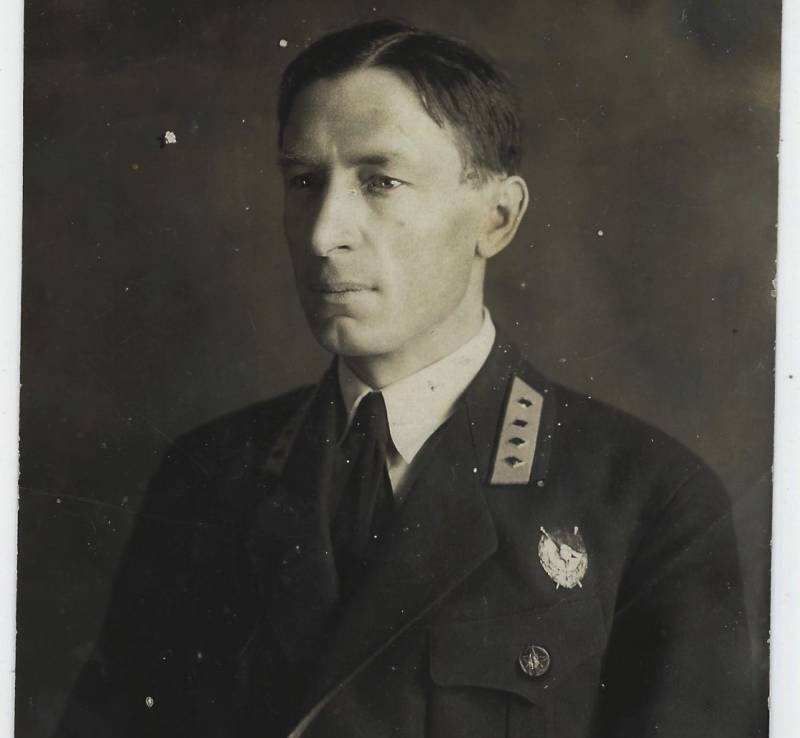
Pyotr Ionovich Baranov, one of the founders of the Soviet Air Force
In his memoirs, Balbo emphasized that throughout the entire visit he did not feel any discomfort:
During the planned official visits, the Italian delegation led by Balbo inspected the cruiser Chervona Ukraine, which was shown to the Italians by the commander of the ship HH Nesvitsky (1893–1945). The Italians were also given the opportunity to explore the city on their own. During their stay in Odessa, the Italian delegation also studied the new Soviet aircraft ANT-9, which arrived in the city under the control of pilot MM Gromov [2].
The flight brought practical results for Italy - in 1930–1931. The USSR acquired five S.55 aircraft in the passenger version, which in the 1930s. were used in the Far East on the Khabarovsk – Sakhalin J61 line [9].
In addition, on December 31, 1930, an agreement was signed with SIAI for the supply of 50 S.62bis flying boats, 125 Asso 750 engines and technical assistance for the production of these aircraft in the USSR under license. Preliminary negotiations with the director of the company, Kape, took a lot of time, because in the conditions of the general financial crisis, Italian banks were reluctant to provide loans.
A month after Balbo’s squadron flew to Odessa, in July 1929, the ANT-9 “Wings of the Soviets” aircraft set off on a trans-European flight along the route Moscow – Berlin – Paris – Rome – Marseille – London – Warsaw – Moscow (about 7 thousand km) , thus paying a return visit to the Italians [2].
The Soviet delegation was given a ceremonial meeting at the Roman airfield of Littorio, where Italian Aviation Minister Balbo and other high-ranking officials were present. While in Italy, the Soviet delegation visited the Aviation Research Institute and the airfield in Montecelio, whose specially built runway served as a launching pad for record-breaking Italian flights. At the end of the Soviet pilots’ stay in Rome, Mussolini himself received them at his villa [2].
In June - August 1930, a Soviet commission worked in Italy under the leadership of Assistant Chief of the Air Force S.A. Mezheninov, which visited “the most important aviation industrial enterprises and a number of military units.” The commission paid special attention to the study of the S.62 aircraft. In a report to the Central Committee of the All-Union Communist Party of Bolsheviks to J.V. Stalin, People's Commissar of Defense K.E. Voroshilov even recommended “raising the issue with the Italian government about the admission of Red Army commanders for improvement with units of the Italian army (pilots, sailors, anti-aircraft gunners, chemists, radio operators), as well as access to factories (for a fee) to study our designers” [2].
In August 1934, a second visit of the Soviet delegation to Italy followed, and in September 1935, the Soviet delegation visited the Milan Aviation Exhibition. Despite the fact that supplies of Italian aircraft to the USSR did not reach the size that the Italian side had hoped for, due to the fact that in the early 1930s. The gap between the Italian and Soviet aviation industries was no longer obvious; Italian flights to the USSR helped attract the Soviet side to the acquisition of large quantities of aircraft and aircraft engines.
Honorary exile to Libya and death in a plane crash
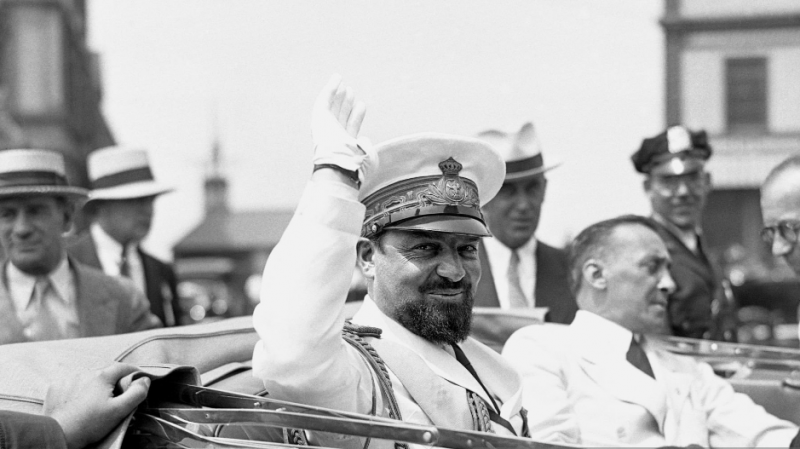
Due to his enormous popularity, Balbo was seen politically as a rival to Mussolini, so the Fascist regime stipulated that Balbo's name should appear in newspapers no more than once a month, and, as some Italian historians (for example Arrigo Petacco) have noted, it was probably for this reason reason he was appointed governor of Libya.
There were actually many reasons. As historian Aldo Berselli notes, during these years the new “dissident” character of Balbo, who did not agree with the Duce on everything, became actualized. His criticism of Mussolini focused on Axis policies and anti-Semitic measures. Italo Balbo repeatedly spoke out against an alliance with Nazi Germany, including in conversations with Ciano, who treated him with contempt, suspecting him of wanting to become Mussolini's successor [1].
Balbo’s position in defense of the Jews was equally open, because in 1922 he received help from the Jews of Ferrara and was friends with many Jews (for example, Renzo Ravenna) who occupied important economic and political-administrative positions in his city. Later, on the occasion of the king’s visit to Libya, raising the issue of ventilated anti-Semitic measures, he called not to imitate the Germans. And in 1938, at a meeting of the Fascist Grand Council, Balbo spoke out against racial measures that discriminated against Jews [1]. In Libya, he prevented the extension of racial laws to local Jews [12].
As governor of Libya, Balbo was involved in the economic and military development of the colony. In one year (from 1935 to 1936), the 1 km Libyan coastal road from Tunisia to Egypt was built, and the Cyrenaica Colonization Administration was reorganized.
However, a serious problem was the lack of the necessary infrastructure in the country to allow the armed forces to operate on two fronts: there were not enough ports, and those that existed, such as Tripoli, were poorly defended; the western border, in Balbo’s own words, was “virtually open.” Balbo also complained to Mussolini about the lack or obsolescence of the military equipment at his disposal [12].
After the outbreak of World War II, Balbo advocated a pro-Western policy of neutrality. However, after Italy entered the war, he assumed command of all armed forces in Libya and was focused on a victorious outcome for his country. He persistently made official and personal requests for adequate means of defense and attack, but his calls were never heard [1].
On June 28, 1940, Italo Balbo flew from the city of Derna to the T.2 airfield at Tobruch Airport on two three-engine SM79s, one of which he piloted himself, the second was piloted by General Felice Porro, commander of the 5th Air Squadron. Flying with Balbo were his nephew Lino Balbo and son-in-law Francesco Florio. Balbo's plane and the wingman's plane did not have radio stations, which made it impossible to communicate with each other and with the ground. Due to an identification error (not long before the airfield had been attacked by British planes), fire was opened on the landing bombers from the anti-aircraft guns of the cruiser San Giorgio, which was joined by the airfield's coastal air defense batteries.
Balbo's plane, which by that time was landing, fell to the ground, engulfed in flames. Everyone on the plane died.
Pietro Badoglio, who was with Benito Mussolini in Alpignano, noted that when Mussolini was told this news, the Duce did not show “the slightest excitement” [12]. Subsequently, Balbo's widow, Countess Emanuela Florio, claimed that her husband was killed on orders from Rome.
How true was this accusation?
A number of reputable Italian historians, notably Giorgio Rocha and Franco Pagliano, considered the political assassination hypothesis to be unfounded - the facts indicate that Balbo's plane was shot down by Italian anti-aircraft fire in Tobruch as a result of a fatal mistake, not a conspiracy. The results of the official investigation also speak about this - among Mussolini’s secret papers, a report was found from Brigadier General Egisto Perino (passenger of the Porro plane), dated July 1, 1940 and corresponding to the official version.
Использованная литература:
[1]. Berselli, Aldo. Balbo Italo. Dizionario Biografico degli Italiani, Volume 5: Bacca–Baratta. Istituto dell'Enciclopedia Italiana, Rome 1963.
[2]. Dyakonova P. G. Soviet-Italian relations in the field of aviation: 1924 - June 22, 1941, dissertation of candidate of historical sciences - M., 2019.
[3]. Makulov S.S. Problems of perception of Italian fascism in the Soviet press, 1922–1941, monograph - M., MGIMO-University, 2021.
[4]. Giorgio Rochat. Italo Balbo, Torino, Edizioni Utet, 1986.
[5]. Silvio Bertoldi. Camicia nera – Fatti e misfatti di un ventennio italiano, Milano, Rizzoli, 1994.
[6]. Giorgio Candeloro. Storia dell'Italia moderna, Vol. 9: Il Fascismo e le sue guerre, Milano, Feltrinelli, 2002.
[7]. Jordansky, N. The fate of fascism // International fascism. Collection of articles / Ed. N. Meshcheryakova. – M., 1923.
[eleven]. Julia Albanese. March on Rome and the conquest of power by the Nazis. [Electronic resource] URL: https://cyberleninka.ru/article/n/pohod-na-rim-i-zavoevanie-vlasti-fashistami
[9]. Dyakonova P. G. Contacts between the Soviet Union and Italy in the field of aviation in 1922–1938. / P. G. Dyakonova // International relations. 2018. No. 1. – P. 123–137.
[10]. Balbo I. Da Roma a Odessa: sui cieli dell'Egeo e del Mar Nero: note di viaggio. Milano, 1929.
[eleven]. Denis Mack Smith, Le guerre del Duce, Milano, Arnoldo Mondadori Editore, 11.
[12]. Giorgio Bocca. Storia d'Italia nella guerra fascista, Milano, Mondadori, 1997.
Information